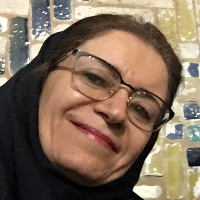Studying the effect of khavunchini on heat transfer from South facade in summer, in very hot and semi-arid climate of Khuzestan
Author(s):
Article Type:
Research/Original Article (دارای رتبه معتبر)
Abstract:
Khavunchini is a kind of extruded ornamental brick work, using brick pieces of equal thickness and different sizes and is applied as the facade of the building. These types of ornaments are found in the vernacular architecture of Khuzestan province and have been used extensively, especially in the historical part of Dezful, in entrances and parts of the inner courtyards. The motive for the present study was studying the shading effect of these patterns on the building facade. the shadow produced by Khavunchini, especially in summer, covered a considerable area of the facade. in addition to their aesthetic role, the resulting shadow patterns can be effective in reducing heat transfer from facade in summer, in very hot climate of Khuzestan. The research objective is to test the effect of these elements on heat transfer from the facade surface. In this study, with an experimental approach, two identical cubicles were constructed with the south face of brick wall, one with a Khavunchini pattern on it and the other with the same but not extruded pattern. Due to the abundance of these ornamental elements in the Dezful historical part, the desired pattern was selected from this region. Abadan was selected, as the representative of very hot and semi-arid climate of Khuzestan, for constructing the models. The reasons for this choice were the feasibility of building the models and conducting experiments in Abadan and the climatic resemblance to Dezful as a treasure trove of Khavunchini art. The variables of ambient temperature and relative humidity, temperature and relative humidity inside the cubicles and average temperature of the cubicles' south face inner surface were recorded in six measurement periods in summer 2019. the results showed that, at the hottest hours of the day, the average temperature of the south face inner surface and the indoor temperature of the cubicle with Khavunchini compared to the cubicle without it, showed an average decrease by 1 and 0.8 °C respectively. The results confirmed the positive effect of Khavunchini on heat transfer reduction from the south facade in summer in the studied climate.
Keywords:
Language:
Persian
Published:
Journal of Architecture Hot and dry climate, Volume:7 Issue: 10, 2020
Pages:
119 to 139
https://magiran.com/p2134229
مقالات دیگری از این نویسنده (گان)
-
Investigating the effect of neighboring buildings’ orientation and the passage on the amount of energy consumption (case example: common residential buildings in Tehran)
Meysam Zekavat, Mansoure Tahbaz*, Mohammadreza Hafezi
Journal of Applied Researches in Geographical Sciences, -
Classification and extraction of architectural plan features using machine learning methods; Case study: Traditional houses of Bandar Kong
Mona Mohtaj, *, Atefeh Dehghan Touranposhti
Journal of Iranian Architecture and Urbanism,


